On the trip to Ha Giang, tourists will come across ethnic people dressing in colourful clothes. Many of you may wonder if all of them belong to one ethnic group or not? Actually beside Kinh group, there are Hmong, Dao, Tay, Nung, Giay, Lo Lo, Pa Then, Pu Peo, La Chi,... Here are some interesting information about some Ha Giang ethnic minority groups that tourists will have the opportunity to meet and greet in the northern end of Vietnam. This karst plateau has many interesting things waiting to be discovered.
1. H’mong ethnic group
The H'mong people make up the largest amount of Ha Giang's ethnic minority population. They are divided into 2 small groups: White H'mong and Flower H'mong. They are highly skilled in agriculture based on rock mountains to grow corn, rice and other agricultural products.
The traditional costume of H'mong women is unique and outstanding because it is made of brocade fabric, including a blouse, skirt and belt, and a slit bra with biba and leggings,... Their skirts are often shaped in conical cropped, sometimes being the long-skirted that has folds. The Hmong's colourful and very eye-catching dresses have become their pride.
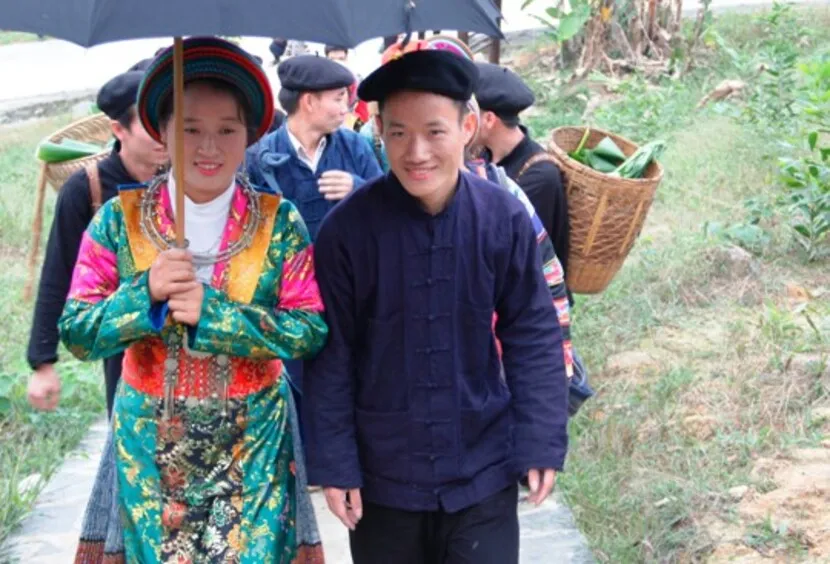
In terms of dwelling, the Hmong house is built of earth and consists of 3 compartments: the centre dedicated to ancestor worship and the other 2 rooms for daily activities.
The beliefs and customs of the H'mong are very diverse and unique. Some important traditional ritual ceremonies are door ghost worship, ancestor worship,...
2. Dao ethnic group
The Dao ethnic group in Ha Giang include the Red Dao, Dao Tien, Dao Ao Dai, Dao Lo Giang,... Each small group possesses a different identity and culture, however they make a living by cultivating on the terraced fields. Besides, these people also earn a living from many other handicrafts such as forging, jewellery making, and fabric embroidery.
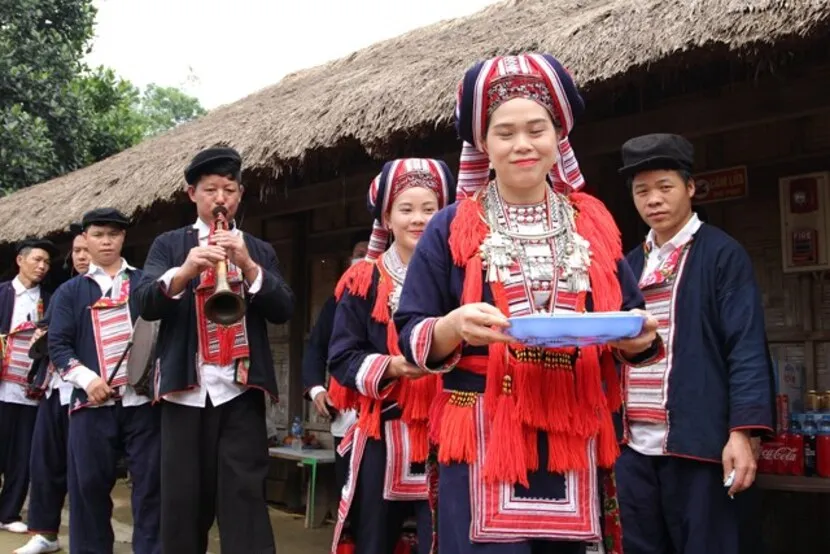
When you set foot in Ha Giang, you will see the typical cobb houses and stilted houses of the Dao people. Besides, they possess a long-time diverse culture. It can be said that the custom of worshipping and practising magic are part of their culture in a very special way.
3. Tay ethnic group
The Tay along with the H'mong and Dao are the 3 ethnic minorities with the largest population you will meet on the Ha Giang trip. Tay people grow wet rice in the foothills along the river or in the mountain fields for the time as long as other ethnic minorities. Some handicrafts are also well developed, including farm tool making, weaving, pottery, woodworking, etc. Furthermore, weaving is another main profession, which the Tay women often do in their spare time.
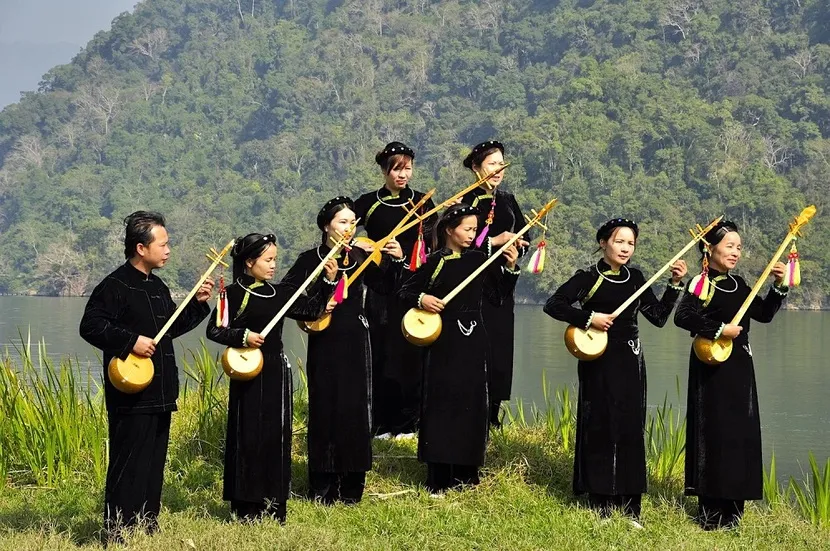
Tay group's dwelling is one of the most beautiful architectural types that they still preserve. Their stilted houses are covered with palm leaves or thatch. Tay people also believe in the natural power so in their culture there are multiple ritual orations related to human beings, agriculture, etc...
4. Nung ethnic group
The Nung people also have a long tradition of wet rice cultivation. They specialise in irrigation, agriculture techniques,... Their handicrafts are also diverse with main occupations such as forging, carpentry, and weaving.
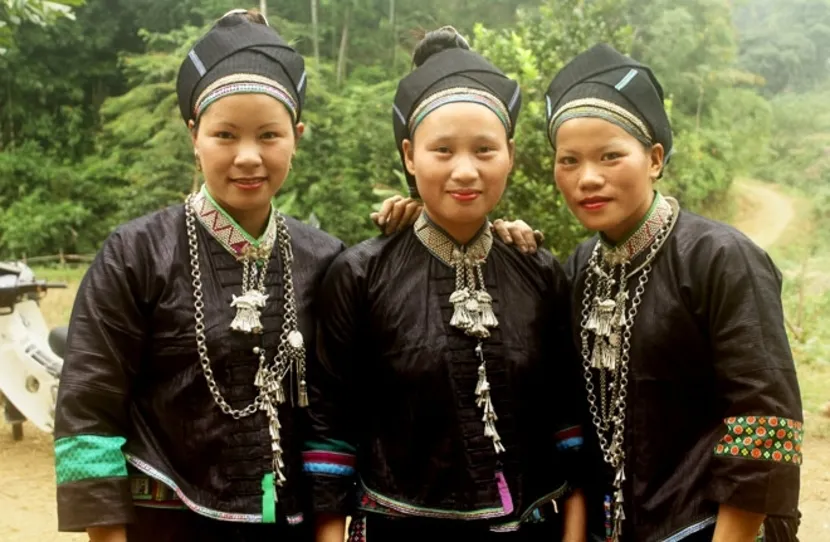
The Nung often reside in the valleys, on hillsides or along rivers and streams,... hence they have raised livestock for their own consumption. They live in the house on stilts of which the outer space is for men and for ancestor worship while the inner space is for women. As regarding the culture and belief, marriage in the Nung community is quite distinct. The younger brother of the boy's mom plays an important role in representing the groom's family in the engagement ceremony and taking charge of the couple's marriage affairs.
5. Giay ethnic group
The Giay ethnic people practise agriculture on dry land and wet rice paddies for their livelihood. Handicrafts such as rattan weaving and embroidery are quite common in the community.
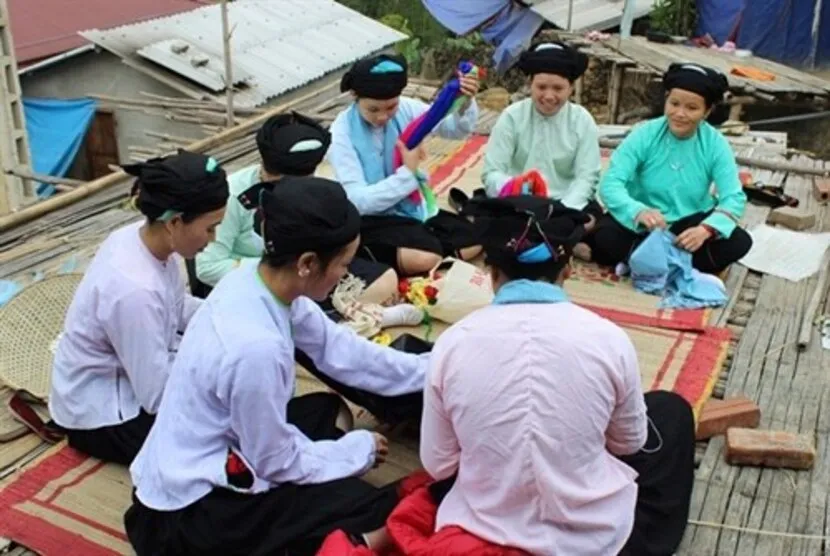
The house architecture of the Giay is similar to many other ethnic groups. Giay's house on stilts has the central compartment dedicated to their ancestor. In their community, there are some special customs. For example when someone passes away, the family member must follow vegetarian diets and are not allowed to sit on chairs. During taking the deceased to the cemetery, they must run quickly to avoid the body being stolen.
6. Pa Then ethnic group
This is one of the ethnic minorities with nearly 5,000 people living in many communes of Ha Giang. Currently, Pa Then people reside mainly in Bac My village and Minh Ha village, Tan Lap commune, Bac Quang district. Although accounting for only a very small part, in the process of livelihood, they have developed their own unique culture. Women's clothing is vibrant and graceful, while men's wear is only one shade of indigo. They stipulate that people with the same surname, having the same ancestors, must not marry each other. Their beliefs and customs also result in many special festivals, events, including the fire jumping ceremony.
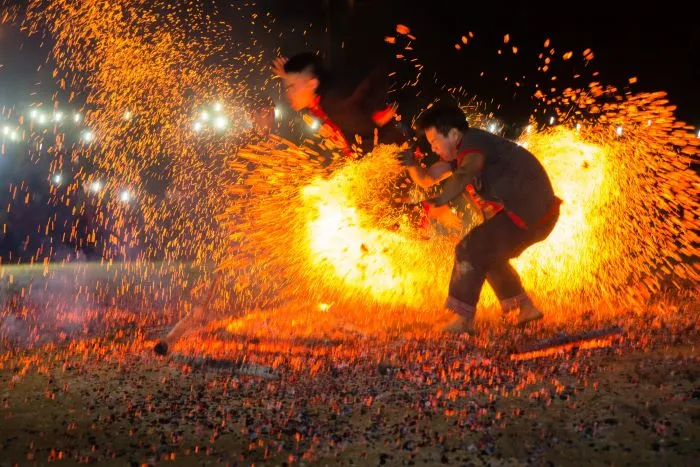
During the fire jumping festival, the Pa Then people light a large, flickering fire. Those who are about to jump into the bonfire will sit nearby. The shaman is responsible for announcing the official reason for the festival and inviting the gods to attend the ceremony with the villagers. Fire jumpers are people whose souls are in line with the gods. Thus they will be given strength and courage, and their feet and body will also be protected from damage by fire. Mysteriously, fire dancers never burn their clothes or hair while performing this ritual. Until now, the secret of the "fire jump" ritual remains.
7. Lo Lo ethnic group
The Lo Lo people are divided into two local groups - Lo Lo Hoa and Lo Lo Den. They were very early inhabitants of the northern part of Ha Giang province. The agricultural economy of the Lo Lo people depends mainly on rice and maize. Relatively developed family-size cattle raising contributes significantly to their income.

In Ha Giang, Visitors can easily recognize a Lo Lo Hoa woman through their clothing, which is a low-necked shirt and a pair of pants underneath a skirt. These costumes are elaborately decorated with motifs such as geometric patterns, cardamom fruits, and birds. The main colours on the costumes are red, orange, and yellow, expressing the joy in the cultural and spiritual life of the Lo Lo people.

The Lo Lo ethnic group often organises many traditional festivals every year such as the Spring Festival, Corn Harvest Festival, etc... to pray for good weather.
Above are the seven main ethnic minority groups in Ha Giang, which you not only can easily recognize by their clothes but also the practice of life. Even though the society is prone to develop in a modern way, they still retain their traditional identities. A trip to Ha Giang would be an opportunity for tourists to learn and discover these unique cultural beauties.
To see more about Ha Giang:
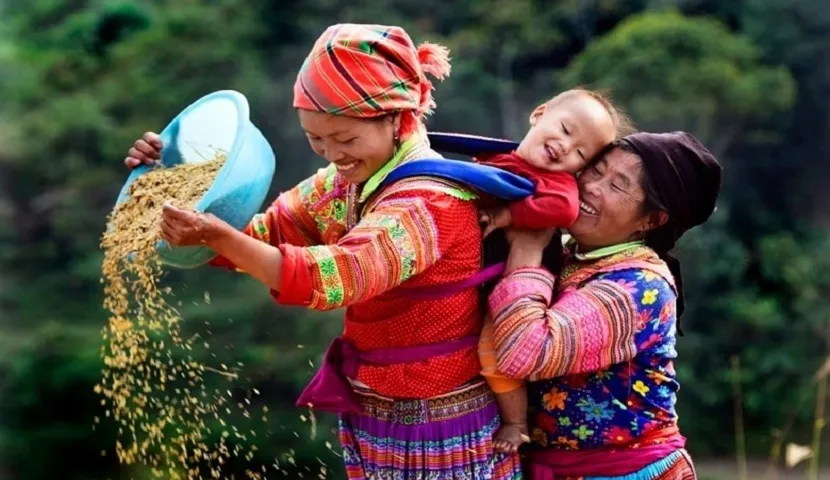







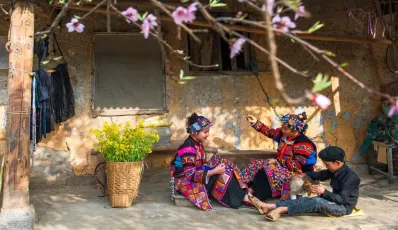
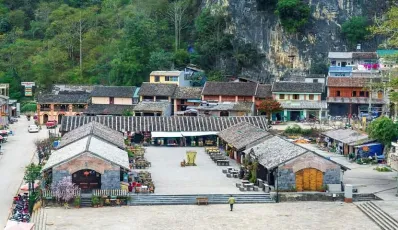

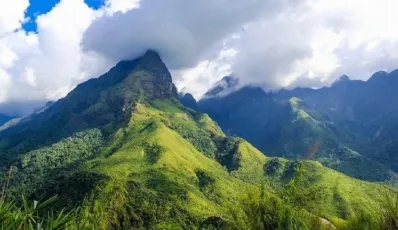
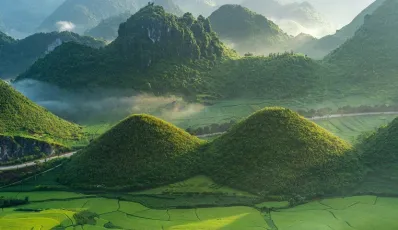
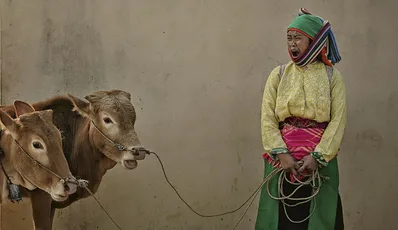
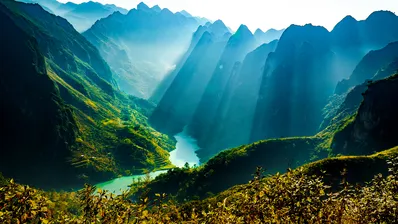

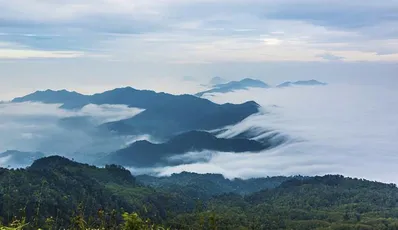




 TRAVELERS' CHOICE 2025
TRAVELERS' CHOICE 2025 



02 Comments
Italy
Vietnam
Write Reply